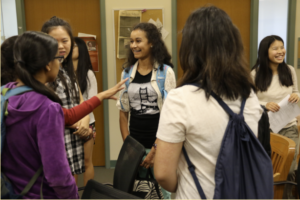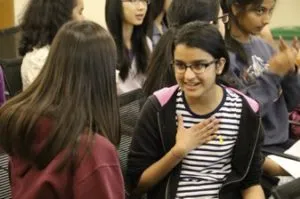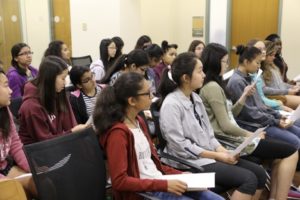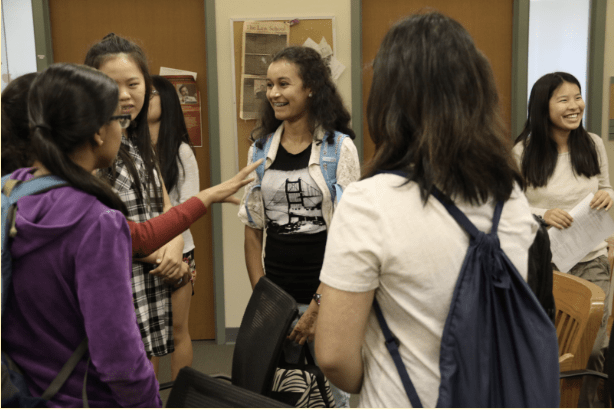Twenty-four girls arrived at Stanford on July 11 to attend a tuition-free camp aimed to give young girls and underrepresented minorities the opportunity to be exposed to STEM-related fields. Stanford Artificial Intelligence Outreach Summer (SAILORS) was created in the summer of 2015 by Fei-Fei Li, a professor of computer science, Postdoc Olga Russakovsky, and Rick Sommer, executive director of the Stanford Pre-Collegiate Studies. Rising high school sophomore girls from 20 states and three countries listened to lectures and conducted research with faculty in the Artificial Intelligence Lab.
“SAILORS is built on the hypothesis that a humanistic mission statement would attract more diverse students,” Li said. “In turn, their values and perspectives are injected into the technology that will impact our society.”

Li grew up in China, where she said the schism between females and males was wider than that in the US. Li was fortunate to have parents who supported her education along the way, and has been a professor for more than ten years. She has seen many changes in the Stanford computer science (CS) department, but she hopes to see greater diversity in staff and students.
“The faculty is talking more about diversity and I’ve seen an increasing undergraduate percentage in women and minorities,” Li said. “But for my taste, the change is way too slow.”
According to the US Department of Commerce, women hold less than 25 percent of STEM jobs than men. Women majoring in STEM are also less likely to work in STEM jobs than their male counterparts. The US Department of Commerce attributes these tendencies to “lack of female role models, gender stereotyping and less family-friendly flexibility in the STEM fields.”

But in the safe haven of the Artificial Intelligence Lab, the girls are already comfortable with each other, joking and chatting with one another during break time. They listened and took notes during a lecture on computer vision in the morning, and participated in team bonding activities before lunch. The rigorous lectures and research projects, combined with personal growth sessions and tours to Dropbox and the Computer History Museum, provide an engaging and comfortable environment for the girls to explore their interests.
SAILORS alumna Rachel Guo expressed her gratitude for the program. As one of the few girls in advanced math and science classes at her high school, Guo said she was often teased or labelled as a “nerd”, and the boys in the classes were “normal.” But after meeting the other 23 girls at camp, Guo realized she was not the only one who felt out of place at school.
“I could express my inner geekiness,” Guo said, with a grin. “I felt completely included because everyone was so understanding, and we’ve all been in similar situations.”
Though SAILORS alumna Connie Lu felt that the boys at her school treated her the same in STEM-related classes, she still notes that in the programming or STEM related clubs, there are fewer female members and girls in leadership positions.

“But here, I met a lot more girls who were interested in STEM,” Lu said. “We still talk even now, about the things we are doing and opportunities [in STEM] nearby.”
SAILORS started as a dream, but Li and Russakovsky needed support and helping hands as it grew into a reality. This year, more than 50 professors, undergraduates, graduates, Ph.D.s, postdocs and research scientists volunteered to create a free opportunity for rising sophomore girls.
“I wouldn’t call it a success yet,” Li said. “We are still trying to make it as good as possible. I’m just trying to do the best job that I can.”
Contact Vivian Chiang at vivianchiang2010 ‘at’ gmail.com.
